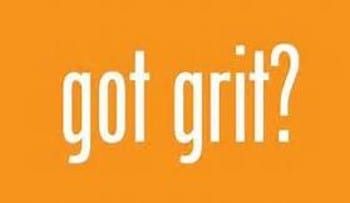By Dr. Paul T. Criss
In honor of Constitution Day, September 17, 2018, I thought it would be appropriate to write about the worldview from which the Constitution was written. There are a whole bunch of people out there that think the United States Constitution has nothing to do with God. There is even a book out there used in law schools called The Godless Constitution where a couple of professors from Cornell say that we have a secular government governed by a secular document. Modernism is at the root of the problem because it separates history from its context. What was the context of the writing of the Constitution? What did the founders intend by what they wrote? These are the questions we should be asking as we interpret and apply the Constitution. Those who penned the Declaration of Independence, the Constitution, and the Bill of Rights did so from a Christian Perspective. There are seven reasons why the Constitution is not a godless document, but rather stems from the Christian worldview.
The first reason the Constitution stems from a Christian worldview is found in Article 7. It is the clause that incorporates the Declaration of Independence into the Constitution. The Declaration of Independence acknowledges God four times, but opponents say that we are not under the Declaration, we are under the Constitution. Eleven years later, the framers left God completely out. Really? That makes the mistake that the two documents were meant to be separated. The Founders intended that the two documents were irrevocably intertwined; they go together. Samuel Adams said, “Before the formation of the Constitution, the Declaration of independence was received and ratified by all states in the union, and it has never been disannulled.” The Declaration has never gone out of force. It was completed before the Constitution and it is a key document. Even the early U.S. Supreme court said, “The Constitution is but the body and letter of which the Declaration is the thought and the spirit…it is always safe to read the letter of the Constitution in the spirit of the Declaration of Independence.” They could not be separated.
The Constitution cannot be understood without the Declaration. John Quincy Adams said, “The Declaration of Independence was the platform from which the Constitution of the United States had been erected. The principles proclaimed in the Declaration of Independence were embodied in the Constitution of the United States.” The foundation cannot be pulled out from under the structure of the Constitution. Consider the Constitution and Declaration as you would the documents needed to call a corporation into existence. Two papers must be created and filed: the first is the Articles of Incorporation; the document that calls the corporation into existence – the reason the corporation is to exist. The second document that must be filed is the Bylaws – this is how the corporation will operate under the Articles of Incorporation. So the Articles of Incorporation provide the purpose and the Bylaws provide the practice; the “what/why” and then the “how.” The Bylaws are never allowed to violate the Articles of Incorporation. The way you operate the company cannot violate the reason it was called into existence. This is why the Declaration and Constitution cannot be separated. The Constitution cannot exist without the Declaration.
The Supreme Court pointed out that you cannot understand the Constitution without the Declaration. They said that if you want to understand the intent of something in the Constitution, then “determine the evil which was intended to be remedied.” If you want to understand why the Second Amendment was added, then determine the evil or abuse they meant to prevent. They wrote this material down to ensure that these abuses never happen in America. Within that framework, look at the articles in the Constitution. If you go to Article 1, Section 5, Paragraph 4: “neither house during the session of Congress shall, without the consent of the other, adjourn for more than three days to any other place in which the two houses shall be sitting.” Why? Go back to the Declaration and look in the 27 grievances, where they pointed out 27 abuses that Great Britain enforced upon the thirteen colonies. Grievance four in the Declaration discusses how the King would adjourn one body of Congress for months or move their meeting location away from needed resources to frustrate their progress when they were proposing something against his will. This was designed to prevent a specific problem going on at the time. Article 1, Section 4, Paragraph 2: “Congress shall assemble at least once a year and such a meeting shall be on the first Monday in December unless they shall by law appoint a different day.” Why? It is the solution to grievance five in the Declaration. Article 1, Section 8, Paragraph 4 says “the purpose is to establish as uniform rule of naturalization and uniform laws on the subject of bankruptcy throughout the United States.” Why? This is the solution to grievance seven in the Declaration. The grievances stated in the Declaration directly correlate to what is stated in the Constitution; therefore, the two documents cannot be separated. It is the only way to understand the two documents.
For the same reason Article Seven, the last line of the Constitution, says, “done in convention by the unanimous consent of the states present the seventeenth day of September in the Year of Our Lord, one-thousand seven hundred and eighty seven.” But then there is another clause: “and of the independence of the United States of America the twelfth.” Why did they date the Constitution back to the Declaration? They did not believe they had created a new document, they were expressing that it was an extension of the Declaration from 1776. To this day, Constitutional Acts signed by the President do not date back to 1787, rather they date back to the Declaration and 1776. That is why it cannot be separated and the first reason we can know it stems from a Christian worldview. Article Seven connects the Constitution to the Declaration; the Declaration acknowledges God four times and sets forth the value system under which America is to operate which is “the law of nature and of nature’s God” – natural law and the Scriptures.
The second reason the Constitution stems from a Christian worldview is the source of its ideas. The Constitution contains ideas that had never before been set forth in a previous government’s documents. A full republic with checks and balances – a marvel among humankind. Where did they get these ideas? Political science professors at the University of Houston collected representative writings out of the founding era (1760-1805) and analyzed who they quoted to find out where they got their ideas. They collected fifteen thousand writings and identified 3,154 direct quotes of the founders; it took them ten years, but they took every quote back to its original source and discovered the top one hundred sources. They published their findings in a book called The Origins of American Constitutionalism. Out of all the writings that were out there – Rousseau, Voltaire, Montesquieu, Hume, Hobbes – the one that was quoted more than any other was Baron Charles Montesquieu’s Spirit of the Laws at 8.3% of the quotations. The next quoted source was Sir William Blackstone’s Commentaries on the Law at 7.9%. The third most cited individual is John Locke’s Two Treatise’s of Government at 2.9%. These are the top three cited individuals, but the number one source cited was the Bible at 34%. That is a good indication that they did not think this was a secular document because this was their primary source. Article 1, Section 8 about immigration compares with Leviticus 19:34. Article 2, Section 1 says the President has to be a natural-born citizen from Deuteronomy 17:15 which says the head of your nation has to be born from among you. Article 3, Section 3 deals with witness for capital punishment for treason, but two people must testify to it in open court; this compares with Deuteronomy 17:6 says you cannot be put to death unless it is established in the mouth of two to three witnesses. Article 3, Section 3 prohibits bills of attainder; Ezekiel 18:20 prohibits these in the Scripture. You can see the Bible throughout the Constitution, but because secularists never read the Bible, they are blind to these connections.
More reasons to come…
Recommended Resources used in this blog: GOD and the Constitution and Original Intent by David Barton. www.wallbuilders.com




